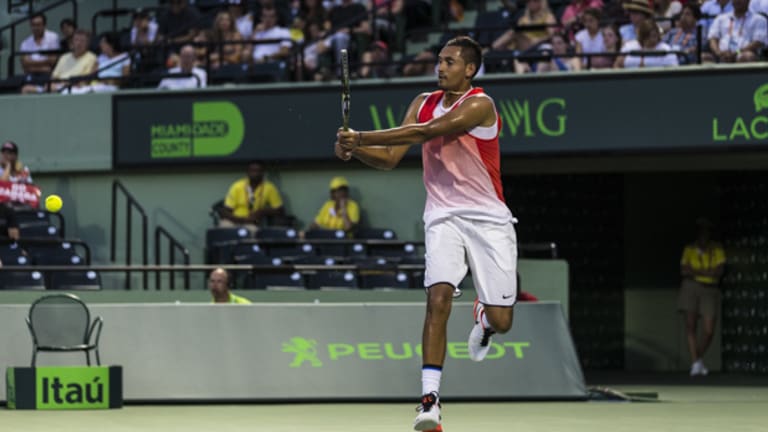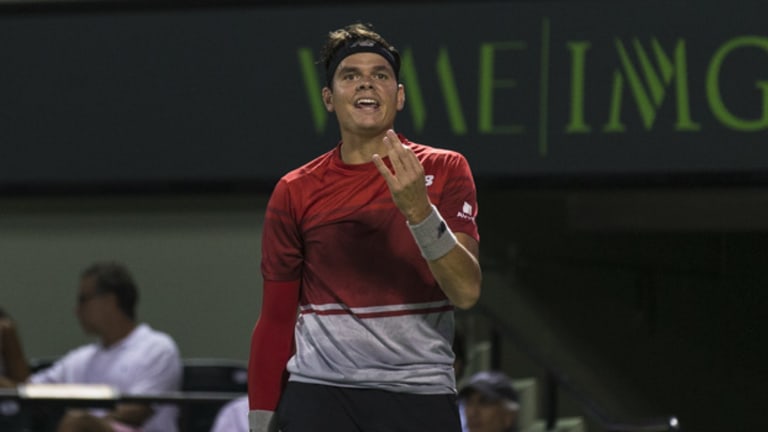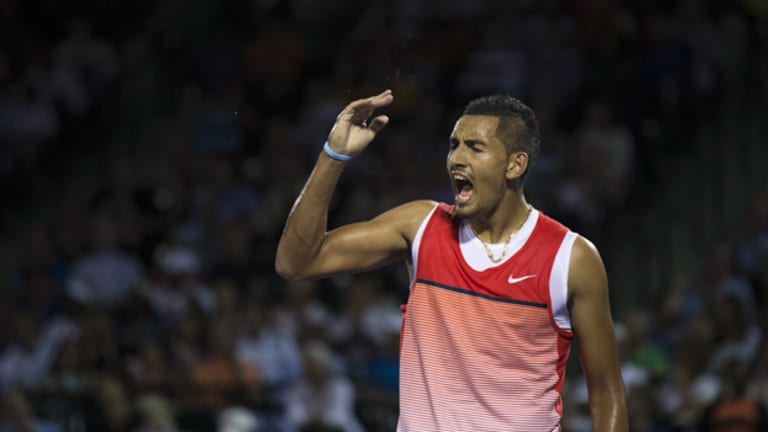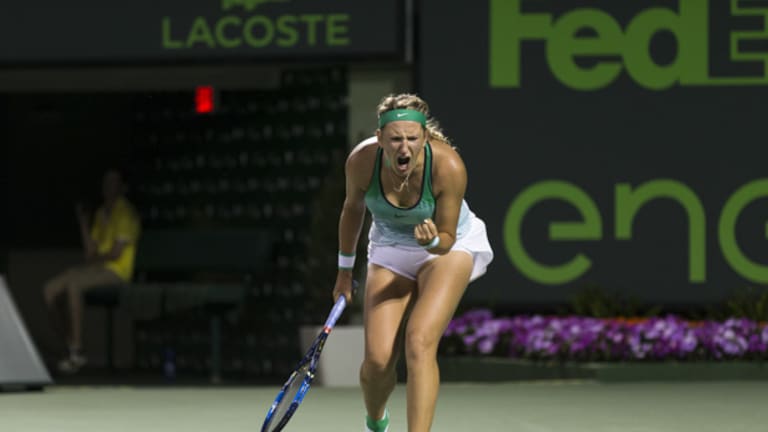KEY BISCAYNE, Fla.—So far in his young career, Nick Kyrgios has been a you-never-know-what-you’re-
On Thursday at the Miami Open, though, it didn’t take long to see which Kyrgios had shown up for his quarterfinal with Milos Raonic. In Raonic’s opening service game, Kyrgios let loose with a forehand that caught the very back of the baseline; a minute later, when he reached break point, he let out a “Come on!” that sent a jolt through the Crandon Park audience, who were just settling into their seats for a pleasant evening’s entertainment. Kyrgios jolted them with another “Come on!” three points later when he battered a backhand return and jumped out to a 1-0 lead.
“I didn’t think I was going to break even once today,” Kyrgios said. “But I came out really energetic and I got a little lucky. He’s got one of the greatest serves in the world ... Even if he tells you where he’s going to serve, it isn’t going to be easy to return it.”




